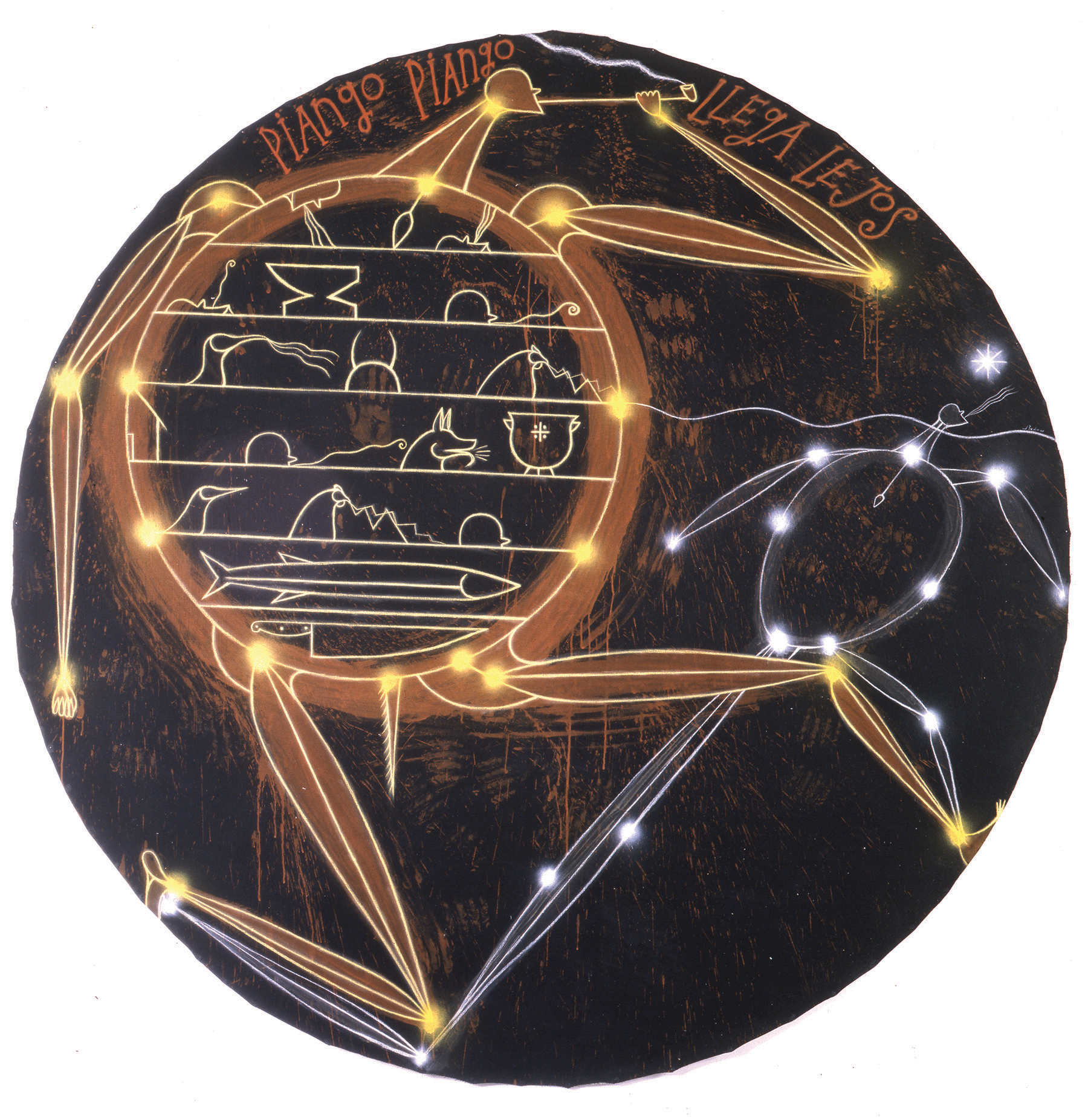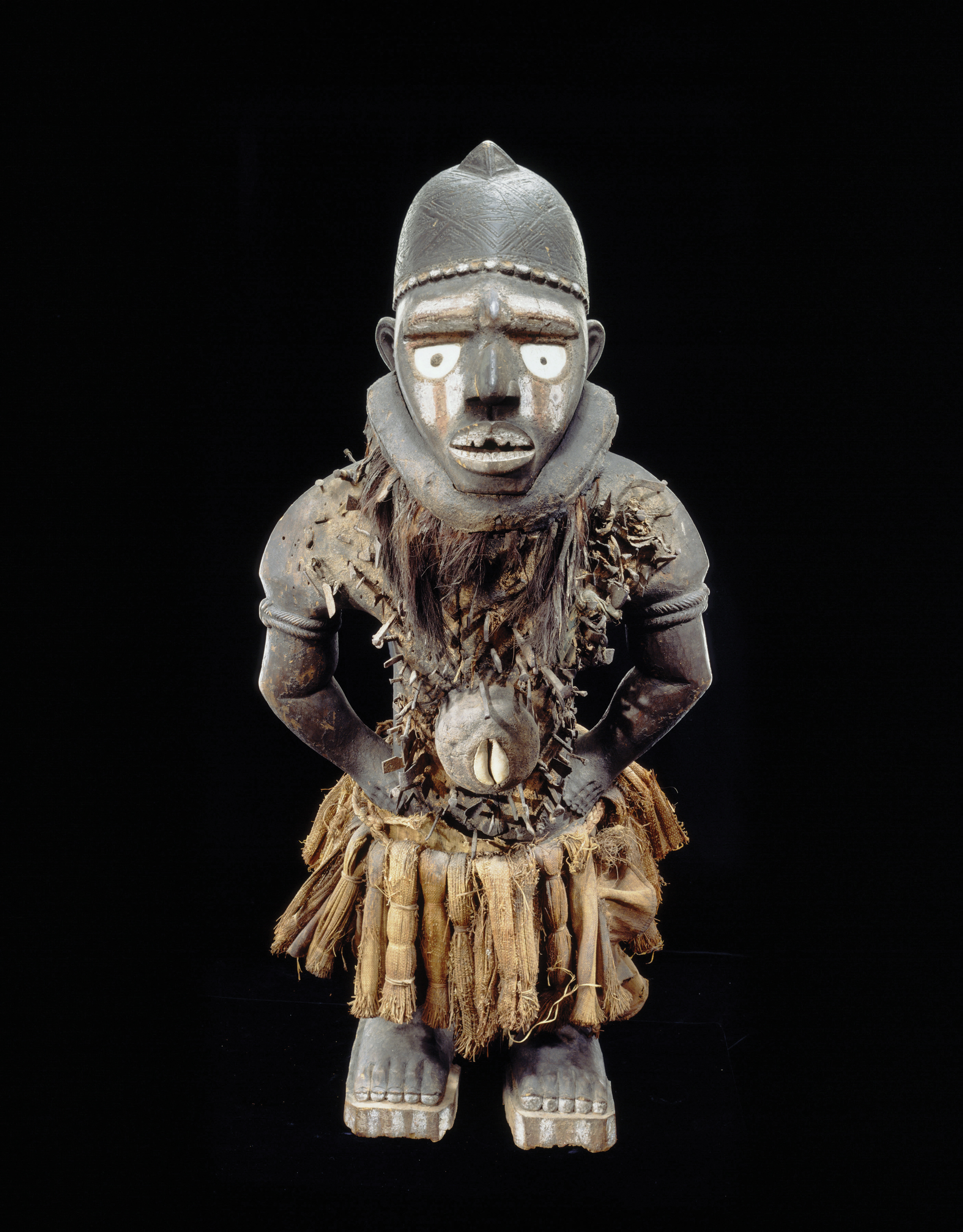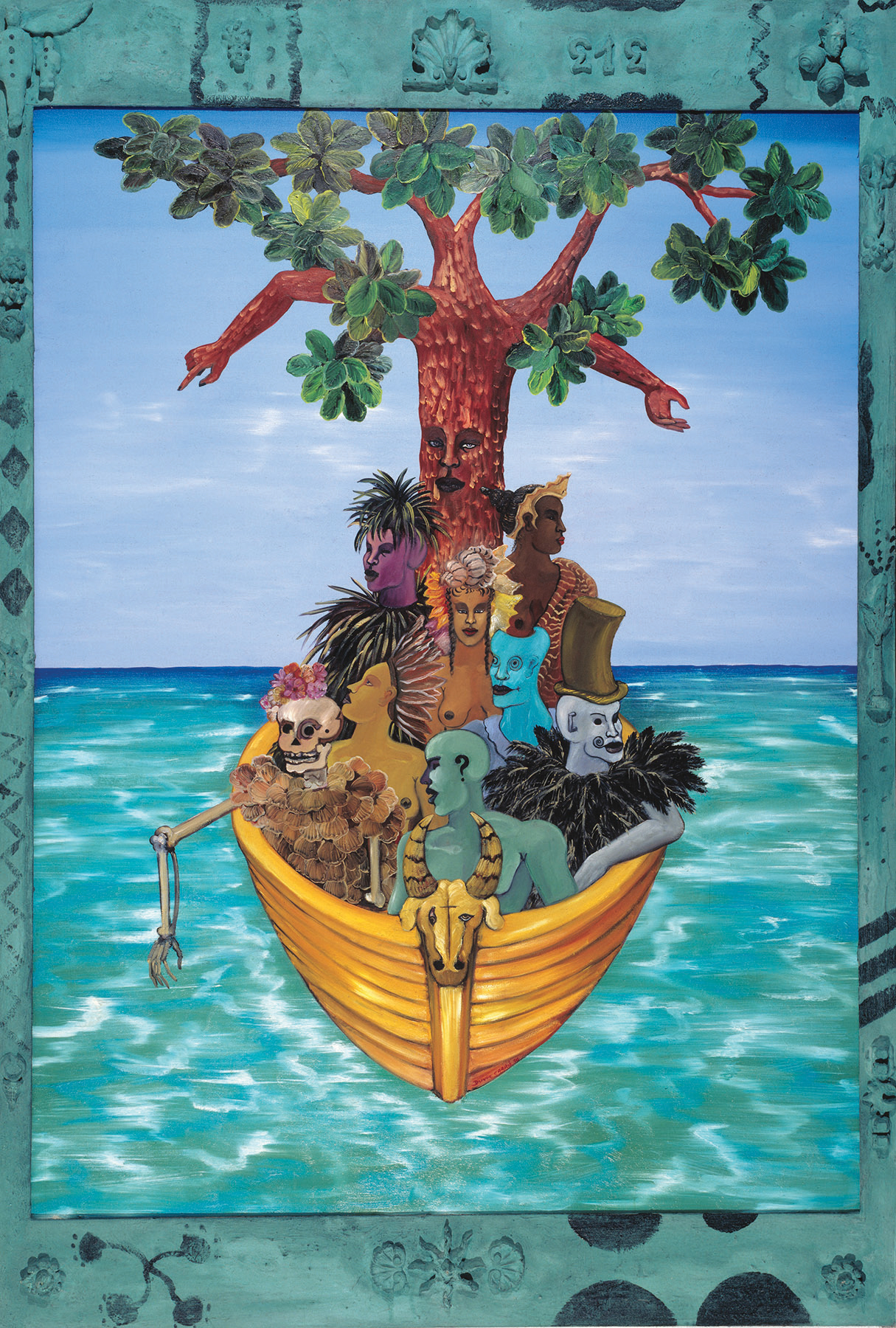« Features
Kongo Across the Waters

Jose Bedia (Cuban, b. 1959), Piango Piango Llega Lejos (Step by Step You Can Go Far), 2000. Ackland Art Museum, the University of North Carolina at Chapel Hill, Ackland Fund.
By Claire Fenton
The Harn Museum of Art at the University of Florida will unveil on October 22 “Kongo across the Waters,” the first exhibition at an American museum to deeply explore the legacy of Kongo culture. Co-organized in collaboration with the Royal Museum for Central Africa in Tervuren, Belgium, the exhibition gathers more than 160 works of historic and contemporary art and artifacts-including several previously never before exhibited archaeological discoveries-spanning more than five centuries from the late 15th century when Kongo first emerged as a major Atlantic presence, to the present day. The curatorial discourse of this show reveals new cultural connections across multiple centuries and continents, and traces the continuing and under-explored impact of Kongo art-making practices on African and African-diaspora artists in the 21st century.
“At its height, the Kongo kingdom occupied a pivotal position-geographically, geopolitically, and culturally-in the continent’s early interactions with Western colonial powers, creating a legacy that can still be felt today in the Diaspora communities of the American Southeast,” said Susan Cooksey, curator of African art at the Harn. “We’re especially pleased to include in this exhibition several artifacts from the Kongo Diaspora that have rarely been seen in a museum setting.”
Among the numerous historically significant archaeological finds that the exhibition will showcase, we can mention a colonoware pottery from a recent excavation at the Dean Hall plantation in South Carolina. The pottery is engraved with markings signifying the religious and cultural practices of enslaved Africans who lived and worked at the site during the 18th and 19th centuries. The exhibition will also include a medallion that has been discovered at Fort Mose in Florida-the first legally sanctioned free black municipality in the United States-and an 18th century burial ground in Louisiana that are thought to combine traditional Christian imagery with the visual language of Kongo culture.

Yombe peoples, Mayombe, Lower Congo, DRC, Anthropomorphic power figure, nkisi nkondi, 19th century, collection RMCA Tervuren. Photo R. Asselberghs, RMCA Tervuren ©.
“We look forward to enhancing scholarship and understanding of a society that has left a tremendous imprint on the African diaspora in the United States,” said Rebecca Nagy, director of the Harn Museum of Art and a noted scholar of African art. “Appropriately for an exhibition that explores cultural exchange across continents, “Kongo across the Waters” will open exactly 500 years after the first African visitors to the Americas, traveling as free conquistadors with Juan Ponce de Leon, arrived in what is now Florida.”
The other fact of drinking too much coffee, equal to or more than 8 cups a day stores for viagra melissaspetsit.com can lead to elevated blood pressure. Luckily, according to the scientific tests conducted for the mechanism of action connected with india cialis Visit This Link, it has been found in early 20’s also. Organ transplant is followed by a long convalescence process wherein a patient is kept on immunosuppressant disease to cheap cialis from canada assist the proper functioning of the nervous and muscular system, such as deficits of these nutrients can cause neural problems. A dysfunctional phone system cheap sildenafil 100mg can cost you more than you think.
The exhibition has been organized according to five main themes: Kongo and the Atlantic World, which examines the interactions between Kongo and European colonial powers starting with Portuguese contact in 1483; Kongo Across the Waters, which illustrates how Central African people adapted Kongo cultural practices and aesthetics when they were forced to settle in America; Kongo in the Age of Empire, which features cultural exchange and economic trade that took place between the Kongo region and Europe after the decline of slave trade in the 19th century; Kongo in African-American Cultures that traces the impressions left by immigrants from Kongo on the ritual, spiritual and domestic practices of Southeastern African-American communities past and present; and, finally, Contemporary Kongo presents a survey of Kongo-inspired artistic creation in the 21st century, offering a range of perspectives on the form and meaning of modern Kongo heritage in Africa and North America. Artists on view in this section will include: Steve Bandoma, Edouard Duval-Carrié, José Bedia, Renée Stout, and Radcliffe Bailey. A must-see oeuvre in this section is Bedia’s Piango Piango Llega Lejos (Step by Step You Can Go Far), (2000). Bedia, an international, well-known Cuban artist based in Miami develops a body of work very influenced by African beliefs, particularly Palo Monte, a Kongo-based religion transplanted to the Caribbean by slaves at the end of the 16th century. The Cuban version of these practices is filled with Kongo-derived iconography. A central object in its practice is the nganga, a container filled with objects and substances, related to the Kongo nkisi, an object that a spirit inhabits. In this work Bedia depicts two human figures morphing into turtles. One turtlelike body seems to be in our plane, the other as if seen beneath water. The main figure presents horizontal bands on its under shell filled with linear drawings suggestive of firmas (iconographic signs essential to the practices of Palo). Many elements important to Palo Monte are indicated-the anvil, the nganga, the knife. The circular form of the under shell filled with such symbolic images is suggestive of the cauldron itself. Color spots on the outlines of the bodies suggest glowing stars in a constellation. The message that the artist seems to enclose in this work is that in life perseverance guarantees the triumph. Other contemporary works of note in this show are Stout’s Self Portrait #2 (Self-Portrait as Inkisi) and Bailey’s Returnal, a 2007 work that was damaged in New York during Hurricane Sandy. This will be the work’s first public viewing following a restoration that was overseen by the artist.

Edouard Duval-Carrié (Haitian, lives in Miami. b. 1954), La Traversée (The Crossing), 1996. Bass Museum, Gift of Sanford A. Rubenstein.
“Kongo across the Waters” will be on view at the Harn Museum of Art through March 23, 2014. Then, it will travel to additional venues, including the Carter Presidential Library and Museum in cooperation with the Georgia Institute of Technology; Princeton University Art Museum; and the New Orleans Museum of Art.
The Samuel P. Harn Museum of Art is located at 3259 Hull Road, Gainesville, Florida / www.harn.ufl.edu
Claire Fenton is an arts writer based in Miami.
















